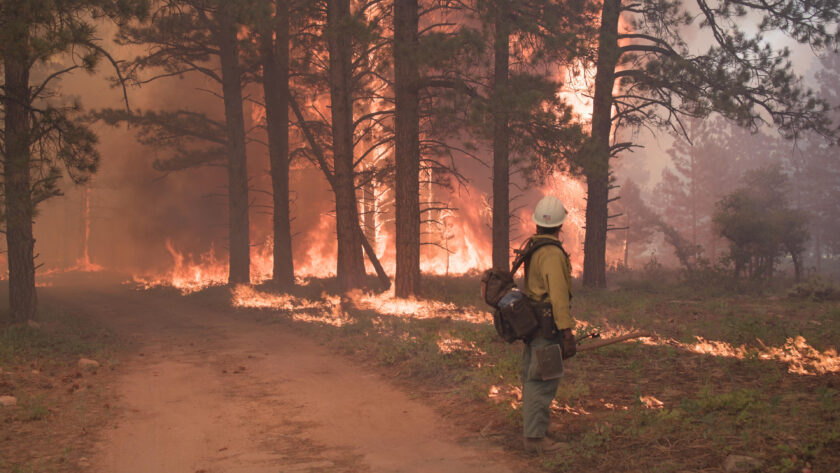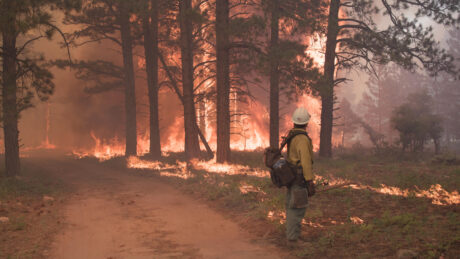BYU: Research shows mega wildfires can actually be a good thing

Photo by Nathan Shinkle
A firefighter observes a controlled burn. Research conducted at Brigham Young University is showing that large wildfires can actually be beneficial to forests.The entire state of Utah remains under some level of drought designation — part of a decades-long megadrought affecting the Western United States. Hotter, dryer weather along with decades of fuel buildup from fire suppression have led to more megafires.
Wildfires can be alarming and destructive; however, new Brigham Young University research finds preventing fires can potentially be worse.
“The Smokey the Bear fire suppression campaign has actually been problematic,” said Sam St. Clair, a BYU plant and wildlife professor. “We should be encouraging more fires in forests that are fire-adapted.”
St. Clair is the principal investigator on the first study to show positive impacts of megafires (fires greater than 100,000 acres) across different forest types. Megafires can help some forest communities thrive — especially in areas where chronic browsing by elk, deer and livestock has hindered tree regeneration, a widespread issue that often leads to forest regeneration failure.
Researchers collected three years of data following the 2019 Pole Creek megafire in Northern Utah. The megafire had created a mosaic of heavily burned and moderately burned areas in high elevation aspen/fir, mid-elevation maple/oak and lower elevation pinyon/juniper communities.
To test forest regeneration and whether elk, deer and livestock would suppress regrowth in the burned areas, researchers measured tree density, height and seedling browsing by wildlife and livestock across 34 burned and unburned sites. Initially, herbivore browsing inhibited new growth in some tree species, but, by the third year, all tree species showed positive recovery.
“Deer and elk populations are much higher than they were historically, and now we have livestock, too,” St. Clair said. “We found that when a fire is large enough and burns with mixed severity, the resulting surge of tree regeneration across forest types exceeds what the animals can consume.”
The research shows resilient forest communities that thrive after fire and with continued herbivory — a positive finding.
Tree species that regenerate from surviving roots, such as aspen and oak, responded particularly well to the fire. The observed success of aspen in response to the fire was a function of growing faster and denser while producing more chemical defense compounds in their leaves that are unpalatable to herbivores. Successful aspen regeneration supports the growth of other tree and understory plant species, creating habitat and forage for wildlife.
“We need to get those fire cycles right,” St. Clair said. “Aspen trees are pioneer species that set the stage for the rest of the forest after fire; they should ideally be burning every 50 to 70 years.”
The research team sees the Pole Creek fire trending toward full recovery. To build a more comprehensive picture of ecosystem resilience, they plan to return to the study sites to collect longer-term datasets.
The data so far are enough for the researchers to recommend large wildfires, with varying burn intensities, as forest management tools to encourage forest regeneration success.
“While there are tradeoffs with the smoky air, the overall effects of fire on the forest communities appear to be positive,” St. Clair said.
Former BYU students Devri Tanner, Kordan Kildew and Noelle Zenger were co-authors on the new research article. BYU professors Benjamin Abbott, Neil Hansen and Richard Gill were also co-authors.



